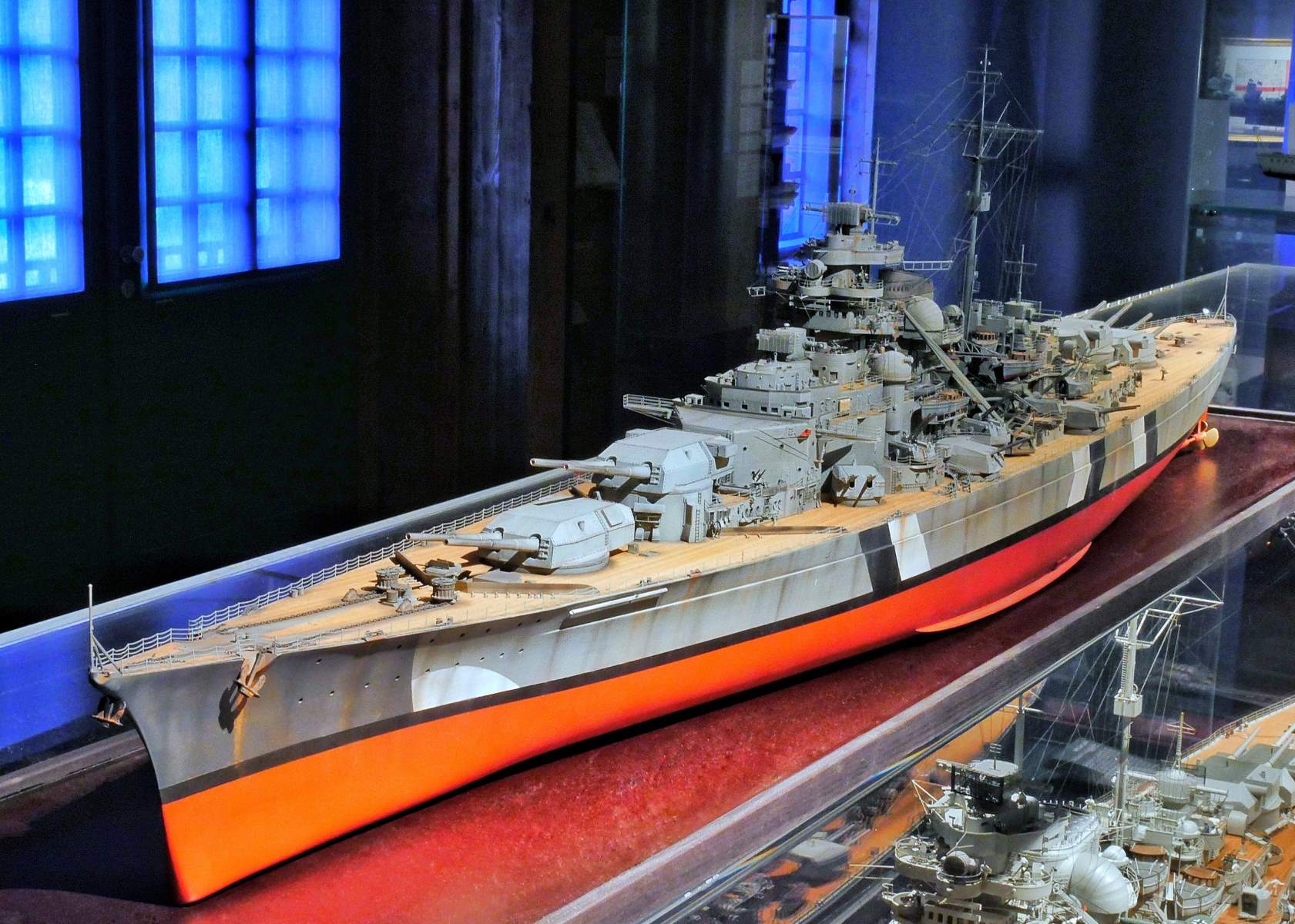
The Bismarck Battleship stands as one of history's most iconic warships. Launched in 1939, this German behemoth was a symbol of naval power during World War II. But what made the Bismarck so legendary? Was it its sheer size, advanced technology, or the dramatic events surrounding its short-lived career? In this post, we'll dive into 37 intriguing facts about the Bismarck, from its construction to its infamous final battle. Whether you're a history buff or just curious about naval warfare, these facts will give you a deeper understanding of this mighty battleship and its place in history.
Key Takeaways:
- The Bismarck battleship, named after Otto von Bismarck, was a powerful symbol of German naval engineering. Its dramatic mission and sinking shattered the myth of invincibility, leaving a lasting legacy in naval history.
- Equipped with formidable firepower and advanced technology, the Bismarck's brief but impactful career influenced naval tactics and ship design during World War II. Its wreck, discovered in 1989, continues to captivate and inspire ongoing research.
The Birth of Bismarck
The Bismarck battleship, a symbol of naval power, has a fascinating history. Let's dive into some intriguing facts about this legendary vessel.
-
Construction Began in 1936: The Bismarck was laid down at the Blohm & Voss shipyard in Hamburg, Germany, on July 1, 1936.
-
Named After Otto von Bismarck: The ship was named in honor of the German Chancellor Otto von Bismarck, who unified Germany in the 19th century.
-
Launched in 1939: The Bismarck was launched on February 14, 1939, with great fanfare and a speech by Adolf Hitler.
-
Commissioned in 1940: The battleship was officially commissioned into the Kriegsmarine (German Navy) on August 24, 1940.
Design and Specifications
The Bismarck was a marvel of engineering, boasting impressive design and specifications.
-
Length of 823 Feet: The Bismarck measured 823 feet (251 meters) in length, making it one of the largest battleships of its time.
-
Displacement of 50,300 Tons: Fully loaded, the Bismarck had a displacement of 50,300 tons.
-
Top Speed of 30 Knots: The ship could reach a top speed of 30 knots (34.5 mph or 55.5 km/h), thanks to its powerful engines.
-
Armored Belt: The Bismarck had an armored belt that was 12.6 inches (320 mm) thick, providing substantial protection against enemy fire.
Armament and Firepower
The Bismarck was equipped with formidable weaponry, making it a force to be reckoned with.
-
Eight 15-Inch Guns: The main armament consisted of eight 15-inch (380 mm) guns mounted in four twin turrets.
-
Twelve 5.9-Inch Guns: The secondary armament included twelve 5.9-inch (150 mm) guns for engaging smaller ships and aircraft.
-
Sixteen 4.1-Inch Guns: The ship also had sixteen 4.1-inch (105 mm) anti-aircraft guns to defend against aerial attacks.
-
Torpedo Tubes: The Bismarck was equipped with four 21-inch (533 mm) torpedo tubes.
The Bismarck's Maiden Voyage
The Bismarck's first and only mission was a dramatic and historic event.
-
Operation Rheinübung: The Bismarck's maiden voyage was part of Operation Rheinübung, a mission to disrupt Allied shipping in the Atlantic.
-
Accompanied by Prinz Eugen: The Bismarck was accompanied by the heavy cruiser Prinz Eugen during this mission.
-
Encounter with HMS Hood: On May 24, 1941, the Bismarck engaged the British battlecruiser HMS Hood, resulting in the Hood's destruction.
-
Sinking of HMS Hood: The Bismarck's shells hit the Hood's ammunition magazine, causing a massive explosion that sank the ship within minutes.
The Pursuit and Final Battle
The Bismarck's final days were marked by a relentless pursuit and a dramatic battle.
-
Damaged by HMS Prince of Wales: During the same engagement, the Bismarck was hit by shells from the battleship HMS Prince of Wales, causing damage to its fuel tanks.
-
Pursued by the Royal Navy: The British Royal Navy launched a massive hunt to track down and destroy the Bismarck.
-
Spotted by a Catalina Flying Boat: On May 26, 1941, a British Catalina flying boat spotted the Bismarck, leading to its final confrontation.
-
Torpedoed by Swordfish Aircraft: British Swordfish torpedo bombers from the aircraft carrier HMS Ark Royal launched an attack, hitting the Bismarck's rudder and crippling its steering.
-
Final Battle on May 27, 1941: The Bismarck was engaged by British battleships HMS King George V and HMS Rodney, along with cruisers and destroyers, on May 27, 1941.
-
Scuttled by Its Crew: To prevent capture, the Bismarck's crew scuttled the ship, and it sank in the Atlantic Ocean.
Legacy and Rediscovery
The Bismarck's legacy lives on, and its wreck was eventually rediscovered.
-
Wreck Discovered in 1989: The wreck of the Bismarck was discovered by oceanographer Robert Ballard in 1989, nearly 48 years after it sank.
-
Resting at a Depth of 15,700 Feet: The wreck lies at a depth of approximately 15,700 feet (4,790 meters) in the Atlantic Ocean.
-
Remarkably Intact: Despite the damage it sustained, the wreck of the Bismarck is remarkably intact, with many of its features still recognizable.
-
Subject of Numerous Documentaries: The Bismarck has been the subject of numerous documentaries, books, and films, keeping its story alive for future generations.
Interesting Tidbits
Here are some lesser-known facts about the Bismarck that add to its mystique.
-
Crew of Over 2,200: The Bismarck had a crew of over 2,200 officers and sailors.
-
Advanced Fire Control System: The ship was equipped with an advanced fire control system that allowed for accurate targeting of enemy ships.
-
Camouflage Paint Scheme: During its mission, the Bismarck was painted with a camouflage scheme to make it harder to spot at sea.
-
Hitler's Personal Interest: Adolf Hitler took a personal interest in the Bismarck, often inquiring about its status and progress.
-
Survivors: Out of the crew, only 114 survived the sinking, rescued by British ships and submarines.
-
Influence on Naval Warfare: The Bismarck's brief but impactful career influenced naval tactics and ship design during World War II.
-
Memorials and Monuments: Several memorials and monuments have been erected in honor of the Bismarck and its crew.
-
Popular Culture: The Bismarck has been featured in various forms of popular culture, including songs, movies, and video games.
-
Myth of Invincibility: The Bismarck was initially believed to be nearly invincible, a myth shattered by its eventual sinking.
-
Symbol of German Naval Power: The Bismarck remains a symbol of German naval power and engineering prowess.
-
Ongoing Research: Researchers continue to study the Bismarck's wreck, uncovering new details about its construction, mission, and final moments.
The Legacy of the Bismarck Battleship
The Bismarck battleship remains a symbol of naval power and engineering prowess. Its short yet impactful career during World War II left an indelible mark on military history. From its impressive armament to its final battle in the Atlantic, the Bismarck's story is filled with strategic maneuvers and heroic efforts. Despite its sinking, the Bismarck's legacy lives on, inspiring countless books, documentaries, and discussions. Understanding the Bismarck's design, missions, and ultimate fate offers valuable insights into naval warfare and the challenges faced by those who served aboard. The Bismarck's tale is a testament to the bravery and ingenuity of the era, reminding us of the complexities and sacrifices involved in war. Whether you're a history buff or just curious, the Bismarck's story is one worth knowing.
Frequently Asked Questions
Was this page helpful?
Our commitment to delivering trustworthy and engaging content is at the heart of what we do. Each fact on our site is contributed by real users like you, bringing a wealth of diverse insights and information. To ensure the highest standards of accuracy and reliability, our dedicated editors meticulously review each submission. This process guarantees that the facts we share are not only fascinating but also credible. Trust in our commitment to quality and authenticity as you explore and learn with us.


